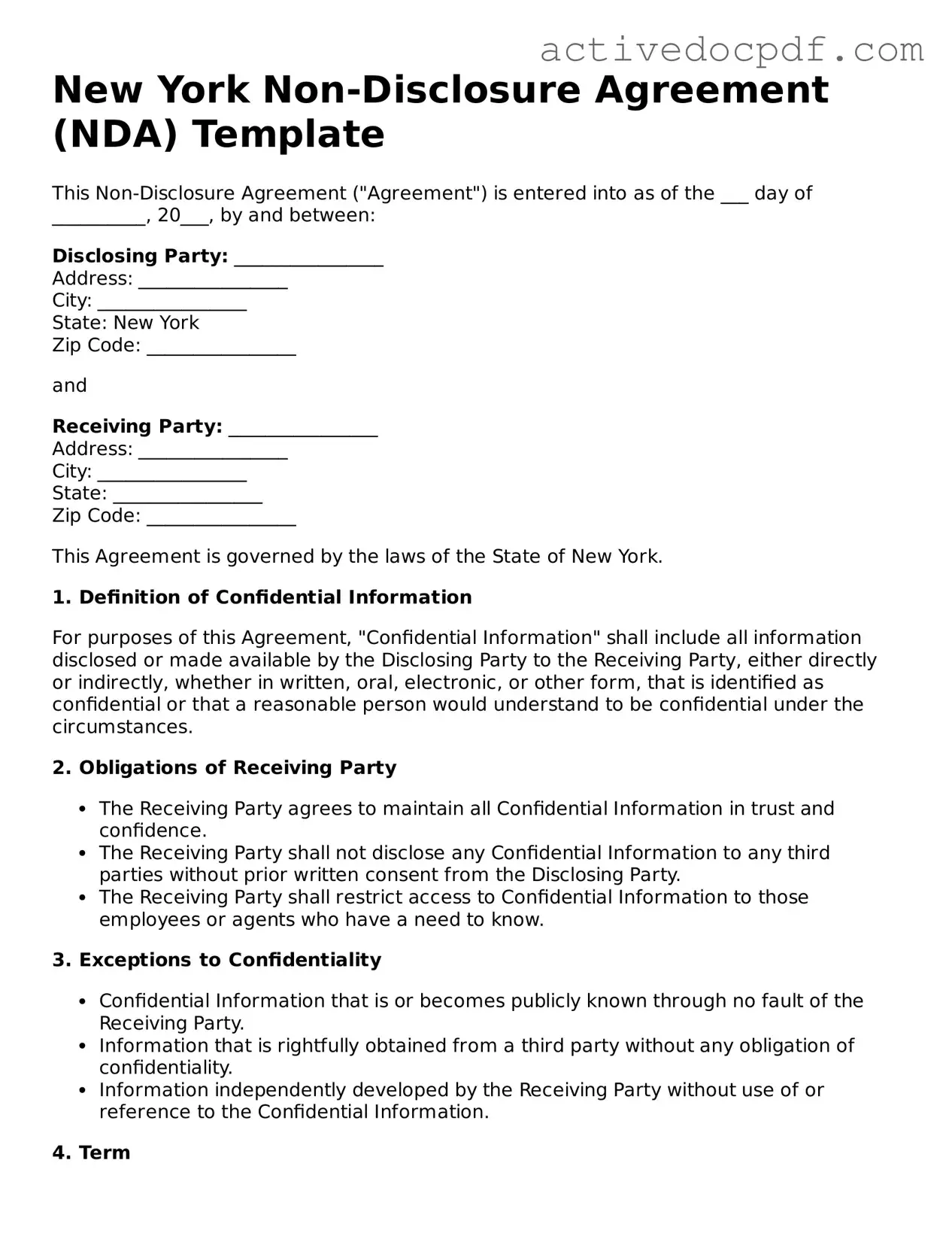What is a Non-disclosure Agreement (NDA)?
A Non-disclosure Agreement (NDA) is a legally binding contract that establishes a confidential relationship between parties. It ensures that sensitive information shared during business dealings remains protected. NDAs are commonly used to safeguard trade secrets, proprietary information, and other confidential data.
Why would I need a Non-disclosure Agreement in New York?
In New York, businesses and individuals often use NDAs to protect their intellectual property and sensitive information. If you are sharing proprietary information with potential partners, employees, or investors, an NDA can help prevent unauthorized disclosure. This is especially important in competitive industries where information leaks can lead to significant financial losses.
An NDA can protect various types of information, including but not limited to:
-
Business plans and strategies
-
Financial information
-
Customer lists
-
Product designs and specifications
-
Marketing strategies
-
Software code and algorithms
Essentially, any information that provides a competitive advantage can be covered under an NDA.
How long does the confidentiality obligation last?
The duration of the confidentiality obligation varies and is typically specified in the NDA itself. It can range from a few years to indefinitely, depending on the nature of the information and the agreement between the parties. It’s crucial to clearly outline this duration to avoid misunderstandings later on.
Yes, there are exceptions. Information that is:
-
Publicly known or becomes publicly known through no fault of the receiving party
-
Independently developed by the receiving party without reference to the confidential information
-
Disclosed to the receiving party by a third party who is not under an obligation of confidentiality
-
Required to be disclosed by law or court order
These exceptions help ensure that the NDA does not unfairly restrict the receiving party's ability to operate.
What happens if someone breaches the NDA?
If a party breaches the NDA, the injured party may seek legal remedies. This can include monetary damages, injunctive relief (a court order to stop the breach), or specific performance (compelling the breaching party to comply with the NDA). The exact remedies available will depend on the terms of the NDA and the nature of the breach.
Can an NDA be enforced in New York courts?
Yes, NDAs are enforceable in New York courts, provided they meet the legal requirements for contracts. This includes mutual consent, a lawful purpose, and consideration (something of value exchanged between the parties). If a dispute arises, the courts will examine the NDA's terms to determine enforceability.
Do I need a lawyer to draft an NDA?
While it is possible to find templates online and draft an NDA without legal assistance, consulting a lawyer is highly recommended. A legal expert can ensure that the NDA is tailored to your specific needs and complies with New York law. This can help prevent potential issues and make the document more robust.
Can I modify a standard NDA template?
Yes, you can modify a standard NDA template to suit your specific needs. However, it is essential to ensure that any modifications do not conflict with existing laws or create ambiguities. Consulting with a legal professional during this process can provide valuable insights and help you create a comprehensive agreement.
Is it possible to have a verbal NDA?
While verbal agreements can be binding in some contexts, they are not advisable for NDAs. The lack of written documentation can lead to misunderstandings and difficulties in enforcement. A written NDA provides clear evidence of the terms agreed upon, making it easier to enforce if necessary.
